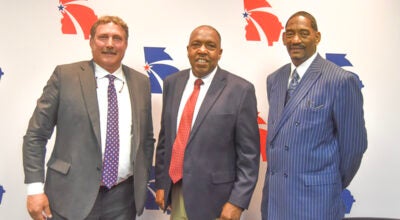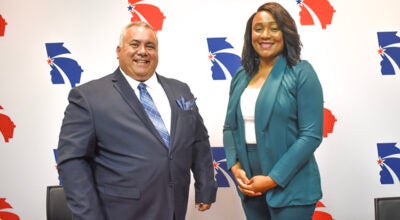Council gets update on Whitesville Road revitalization
Published 6:50 pm Wednesday, July 24, 2019
On Tuesday, the LaGrange City Council received an update on a project that could revitalize the Whitesville Road corridor, and an update on the $2 million grant that would be needed to jump start those changes.
The city is currently in the process of applying for an Innovative Grant Proposal for fiscal year 2019-2020 in order to clear blight and provide career training to locals. The proposed project would target the Whitesville Road corridor — an area where the City of LaGrange has already committed funds — but it would focus on improvements that would fall outside of the city’s usual scope.
The funds would make it possible to purchase and redevelop properties along the Whitesville Road corridor into the kind of businesses and homes that leaders have discussed needing in the area for years. During the meeting, City of LaGrange Community Development Director Alton West discussed the purchase of several homes near the LaGrange Housing Authority and redevelopment plans.
“Those [units purchased on Whitesville Road] will be slated for tear down,” West said. “They will not be rebuilt in that area because we want to rebuild that area in phase two with some commercial and maybe some living units there. We will keep one unit that we will utilize as a temporary relocate for units on the Butler Street and Bagley Street. There are five units on Butler Street and two units on Bagley Street that we would like to purchase as well.”
If the grant funding is approved, some of the space purchased would be utilized to provide training in one of the area’s most in-demand fields — construction.
“What we are trying to do is provide a training facility across the street,” West said. “Then, we would utilize the trainees from the facility to go back and rehab the homes across the street on Butler and Bagley Street.”
West said many homes identified in the proposal were built during the 1920s, so they are far from energy efficient.
“[When I first heard about the proposal,] it was really focused on training individuals in that immediate area — the 25 to 35-year-old looking to get off of government assistance and really be trained in a trade [like] electrical, plumbing, heating and air,” said Dale Jackson, a partner on the project and co-owner of Jackson Services. “I explained to Alton what I had already done at Callaway High School working with the Troup County School System. We developed this very thing at Callaway High School, and I’ve been in the process of working with West Georgia Tech … except with a little bit older age bracket.”
Jackson said that the community group reached out to WGTC and TCSS and hopes that the new training space could serve as a sort of “THINC 2.0” to train both high school students and older students receiving training through WGTC. West said the project would also include a home where the students could try their newly-learned technical skills out first hand.
Council Member Nathan Gaskin worried about residents becoming discouraged in the short term by poor housing conditions in parts of the project’s target area.
Council Member Jim Arrington said that the trade training would provide an opportunity to build wealth, which would be beneficial long-term. West noted that because the students receiving career training would need on-the-job experience, the program may provide access to repairs at material cost.
The terms of the grant call for a project that will result in substantial, transformative change, while recognizing that those changes will not happen overnight, and West said that LaGrange’s proposal meets those requirements without question. West also said the grant aims to help underserved, low to moderate income people. He added that the support of community partners has set apart LaGrange’s application from the beginning.
“If you look at the list of these names, it speaks to the partnership of the entities that will feed this program,” said Becca Eiland, director of marketing and communication for Groundswell, another partner.
If the city receives the grant, it would need to provide $300,000 in matching funds. The city previously agreed to help fund a narrow, or linear, park on Whitesville Road next to the LaGrange Housing Authority. The linear park will be a long, thin park that runs between the LHA homes on Whitesville Road and the road itself. It is being funded through the Callaway Foundation and the City of LaGrange, and it is expected to improve the overall appearance of the Whitesville Road corridor.
“They are going to be taking down 11 units along the front of Whitesville Road,” West said. “Those units will not be rebuilt. … To the south of them, they are building a three story, 70 unit [structure] that those families will be relocated in.”
Additionally, the LHA is currently in the process of a major redevelopment project that its leaders hope will drastically improve the appearance around both of its locations in the city. There’s also the recent solar flower installation that was installed with the help of some of the partners supporting this proposal, which is expected to serve as a catalyst for learning about green energy while supplementing LHA utilities.
“This isn’t a one and done,” Eiland said. “This is in partnership and in alignment with the housing authority’s vision of empowering individuals to have the skillsets to become independent and cycle out of poverty.”
The City of LaGrange is one of two finalists for the $2 million grant, but West said that the transformative nature of the project along with the community partnerships already in place give the city a good chance of being able to win the award.





